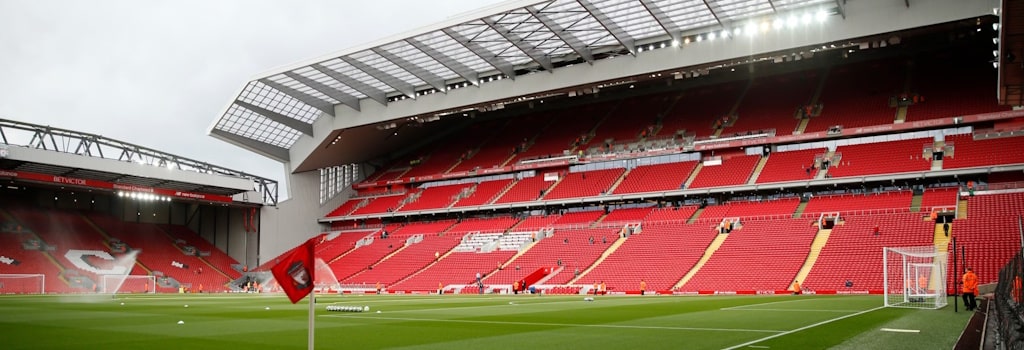

There's something almost sacred about stepping into the perfect football ground. It's not just the symmetry of the pitch or the roar of the crowd; it's the culmination of design, atmosphere, and legacy, all converging on a rectangle of turf. Every angle, blade of grass, and acoustic bounce is meticulously engineered to elevate the experience, not only for players but for the thousands watching and cheering from the stands (or screens). Behind the scenes, there's a world of planning that makes the stadium more than a backdrop-it becomes part of the spectacle.
But football grounds aren't just places of worship for fans; they're also the very fields on which fortunes are risked and won. With millions betting on matches every week, the pitch plays a direct role in outcomes. And if you're one of those fans who enjoy the thrill beyond the final whistle, you'll appreciate the LVBet Casino no deposit bonuses offered by NoDepositRewards, a reminder of how intertwined sport and stakes have become in today's game.
Discover what it takes to create the perfect football ground, from pitch quality to modern turf technology.
For footballers, the pitch is more than just a surface, it's their workplace. Like any job, the environment plays a critical role in performance and safety. The quality of the turf affects how players move, how the ball travels, and the risk of injury. That's why selecting the right type of grass is a key decision for clubs and groundskeepers, usually based on the local climate and how often the pitch is used.
Natural grass options generally fall into two main categories, cool-season and warm-season varieties. Cool-season grasses, such as perennial ryegrass and Kentucky bluegrass, grow best in cooler climates. They are known for their ability to withstand frequent use, recover quickly, and maintain their vibrant green colour throughout the season, making them ideal for pitches in the UK and northern Europe.
In contrast, warm-season grasses like Bermudagrass and Zoysia thrive in hotter, sunnier climates. These varieties are durable and resilient but tend to go dormant during colder months, making them more suitable for southern or tropical regions. Today, many modern football pitches combine natural grass with synthetic fibers to enhance both performance and durability. These hybrid systems allow for faster ball movement and better withstand heavy use. A notable example is Liverpool's upgrade of Anfield's pitch to a reinforced hybrid system, which contributed to the team going unbeaten at home for an entire league season.
Having the perfect football ground goes far beyond just planting the right grass, you need to also provide continuous ongoing care. No matter what the grass type, maintaining pitch quality requires a well-structured upkeep plan. This should include tasks like mowing, aerating the soil, applying fertiliser, and marking the lines. Over time, all pitches show signs of wear from frequent use, so a more intensive annual renovation is usually scheduled outside of the playing season to restore the surface.
Drainage and irrigation are also vital parts of pitch maintenance. Most high-level football fields are built on sand-based foundations to prevent waterlogging, but this makes them dry out faster. That's why a reliable watering system is essential. It helps keep the grass healthy, ensures nutrients reach the roots, and creates a stable playing surface. Regular irrigation also improves how the ball moves across the pitch, keeping play fast and fluid. It's now standard practice at many clubs to water the surface before matches and during halftime.
It can be challenging to keep football grounds in top condition when natural sunlight is often limited by towering stands and roof structures. That's why artificial lights have become a necessity rather than a luxury. These lighting systems support grass growth when natural light is insufficient, especially during the winter months or in shaded areas of the pitch.
Traditionally, clubs have used high-pressure sodium (HPS) lamps, which provide both light and heat to promote healthy turf development. More recently, LED grow lights have become increasingly popular. They consume less energy, last longer, and are more cost-effective over time. While early LED systems lacked a heat component, many newer models now include infrared bulbs that can provide warmth when needed, particularly useful in colder climates, though this does increase energy consumption.
A football pitch is only as good as the people who maintain it. Behind every smooth, green surface is a dedicated team of experts working to keep the turf healthy, resilient, and match-ready. These professionals include groundskeepers, turf scientists, engineers, and equipment specialists, all playing a vital role in building and maintaining top-quality playing fields.
The UK is a global leader in turf management. The groundskeeping industry is valued at over £1 billion and employs more than 27,000 people. Many of these specialists focus on niche areas, such as developing grass varieties suited to shaded stadiums or analysing how different soil types affect drainage and turf performance.
Ultimately, the quality of a football pitch relies not just on grass or technology, but on the skilled professionals who know how to combine both. Their expertise ensures that every football ground meets the highest standards, regardless of weather, matchday pressure, or wear and tear.
Tony Incenzo has been to over 2,000 football grounds - is he the world's barmiest football fan? Read about his love for Non-League football and groundhopping obsession, including watching a match in prison!
An in-depth look at the biggest football attendances ever recorded, from the 1950 World Cup to pre-season friendlies in the States and the Scottish ground with dozens of 100,000+ attendances
The 91 biggest football stadiums in Europe. From Manchester to Munich, Villa Park to Valencia - each one with a capacity over 40,000
All good things have to come to an end, and the same unfortunately has to be said for football stadiums too. This article looks at the grounds which are soon to host their last match, the stadiums whose days are numbered and where fans will be watching their football from next.
